CFD Simulation of High Gas Flow Rate in Large-Scale Rotating Packed Beds
Abstract
1. Introduction
1.1. Previous Experimental and Modeling Studies of Pressure Drop in RPBs
1.2. Application of CFD Simulation in RPB Analysis
2. Geometry and Mesh Generation
3. Simulation Method
4. Validation of the Simulation Result
5. Large-Scale RPB Simulation
6. Result and Discussion
6.1. Dry Pressure Drop in the Case and Eye of the Rotor
6.2. Dry Pressure Drop in the Rotating Bed
6.3. CFD-Aided Pressure Drop Correlation
7. Conclusions
Author Contributions
Funding
Data Availability Statement
Conflicts of Interest
Abbreviations
| ap | Specific surface area (m2/m3) |
| Di | Inner diameter of the rotor (m) |
| Do | Outer diameter of the rotor (m) |
| Dw | Wire diameter (m) |
| dp | Equivalent spherical diameter, particle diameter, m |
| f | Friction factor |
| Fg | Gas capacity factor, Pa0.5 |
| H | Height of the rotating bed |
| nw | Number of wires |
| P | Pressure (Pa) |
| Qg | Gas volume flow rate (m3/s) |
| Ri | Inner radius of the bed (m) |
| Ro | Outer radius (m) |
| Rw | Wire radius (m) |
| Reg | Gas Reynolds number |
| Uinlet | Inlet velocity (m/s) |
| Greek Letters | |
| ∆P | Pressure drop (Pa) |
| ε | Porosity |
| ρg | Gas density (m3/s) |
| Ψ0 | Resistance coefficient for single-phase flow for classical, non-perforated packing elements such as ceramic Raschig rings |
| ω | Angular velocity (rad/s) |
| μg | Gas dynamic viscosity (kg/ms) |
References
- Hendry, J.R.; Lee, J.G.M.; Attidekou, P.S. Pressure drop and flooding in rotating packed beds. Chem. Eng. Process.–Process Intensif. 2020, 151, 107908. [Google Scholar] [CrossRef]
- Agarwal, L.V.; Pavani, D.P.R.; Kaistha, N. Process intensification in HiGee absorption and distillation: Design procedure and applications. Ind. Eng. Chem. Res. 2010, 49, 10046–10058. [Google Scholar] [CrossRef]
- Zheng, C.; Guo, K.; Feng, Y.; Yang, C.; Gardner, N.C. Pressure drop of centripetal gas flow through rotating beds. Ind. Eng. Chem. Res. 2000, 39, 829–834. [Google Scholar] [CrossRef]
- Sandilya, P.; Rao, D.P.; Sharma, A.; Biswas, G. Gas-phase mass transfer in a centrifugal contactor. Ind. Eng. Chem. Res. 2001, 40, 384–392. [Google Scholar] [CrossRef]
- Keyvani, M.; Gardner, N.C. Operating Characteristics of Rotating Beds; Case Western Reserve University: Cleveland, OH, USA, 1987. [Google Scholar] [CrossRef]
- Kelleher, T.; Fair, J.R. Distillation Studies in a High-Gravity Contactor. Ind. Eng. Chem. Res. 1996, 35, 4646–4655. [Google Scholar] [CrossRef]
- Liu, H.-S.; Lin, C.-C.; Wu, S.-C.; Hsu, H.-W. 1996. Characteristics of a Rotating Packed Bed. Ind. Eng. Chem. Res. 1996, 35, 3590–3596. [Google Scholar] [CrossRef]
- Neumann, K.; Hunold, S.; Skiborowski, M.; Górak, A. Dry Pressure Drop in Rotating Packed Beds–Systematic Experimental Studies. Ind. Eng. Chem. Res. 2017, 56, 12395–12405. [Google Scholar] [CrossRef]
- Zhang, W.; Xie, P.; Li, Y.; Teng, L.; Zhu, J. 3D CFD simulation of the liquid flow in a rotating packed bed with structured wire mesh packing. Chem. Eng. J. 2021, 427, 130874. [Google Scholar] [CrossRef]
- Zhang, W.; Xie, P.; Li, Y.; Teng, L.; Zhu, J. CFD analysis of the hydrodynamic characteristics in a rotating packed bed with multi-nozzles. Chem. Eng. Process.–Process Intensif. 2020, 158, 108107. [Google Scholar] [CrossRef]
- Liu, Y.; Wu, W.; Luo, Y.; Chu, G.W.; Liu, W.; Sun, B.C.; Chen, J.F. CFD Simulation and High-Speed Photography of Liquid Flow in the Outer Cavity Zone of a Rotating Packed Bed Reactor. Ind. Eng. Chem. Res. 2019, 58, 5280–5290. [Google Scholar] [CrossRef]
- Liu, Y.; Luo, Y.; Chu, G.W.; Luo, J.Z.; Arowo, M.; Chen, J.F. 3D numerical simulation of a rotating packed bed with structured stainless steel wire mesh packing. Chem. Eng. Sci. 2017, 170, 365–377. [Google Scholar] [CrossRef]
- Chen, W.C.; Meng, W.H.; Liu, Z.H.; Chu, G.W.; Zhang, L.L.; Chen, J.F. Hydrodynamics of gas flow in a rotating packed bed under floating motions: Experimental and simulation study. Chem. Eng. J. 2022, 442, 136149. [Google Scholar] [CrossRef]
- Guo, T.Y.; Cheng, K.P.; Wen, L.X.; Andersson, R.; Chen, J.F. Three-Dimensional Simulation on Liquid Flow in a Rotating Packed Bed Reactor. Ind. Eng. Chem. Res. 2017, 56, 8169–8179. [Google Scholar] [CrossRef]
- Zhang, W.; Xie, P.; Li, Y.; Zhu, J. Modeling of gas–liquid flow in a rotating packed bed using an Eulerian multi-fluid approach. AIChE J. 2022, 68, e17561. [Google Scholar] [CrossRef]
- Lu, X.; Xie, P.; Ingham, D.P.; Ma, L.; Pourkashanian, M. A porous media model for CFD simulations of gas-liquid two-phase flow in rotating packed beds. Chem. Eng. Sci. 2018, 189, 123–134. [Google Scholar] [CrossRef]
- Zhang, G.; Ingham, D.; Ma, L.; Pourkashanian, M. Modelling of 3D liquid dispersion in a rotating packed bed using an Eulerian porous medium approach. Chem. Eng. Sci. 2022, 250, 117393. [Google Scholar] [CrossRef]
- Lu, X.; Xie, P.; Ingham, D.B.; Ma, L.; Pourkashanian, M. Modelling of CO2 absorption in a rotating packed bed using an Eulerian porous media approach. Chem. Eng. Sci. 2019, 199, 302–318. [Google Scholar] [CrossRef]
- Zhang, G.; Ma, L.; Pourkashanian, M. A porous medium approach to the 3D modelling of an entire rotating packed bed for post-combustion carbon capture. Chem. Eng. Sci. 2023, 274, 118687. [Google Scholar] [CrossRef]
- Llerena-Chavez, H.; Larachi, F. Analysis of flow in rotating packed beds via CFD simulations-Dry pressure drop and gas flow maldistribution. Chem. Eng. Sci. 2009, 64, 2113–2126. [Google Scholar] [CrossRef]
- Rao, D.P.; Bhowal, A.; Goswami, P.S. Process Intensification in Rotating Packed Beds (HIGEE): An Appraisal. Ind. Eng. Chem. Res. 2004, 43, 1150–1162. [Google Scholar] [CrossRef]
- Maćkowiak, J. Extended channel model for prediction of the pressure drop in single-phase flow in packed columns. Chem. Eng. Res. Des. 2009, 87, 123–134. [Google Scholar] [CrossRef]

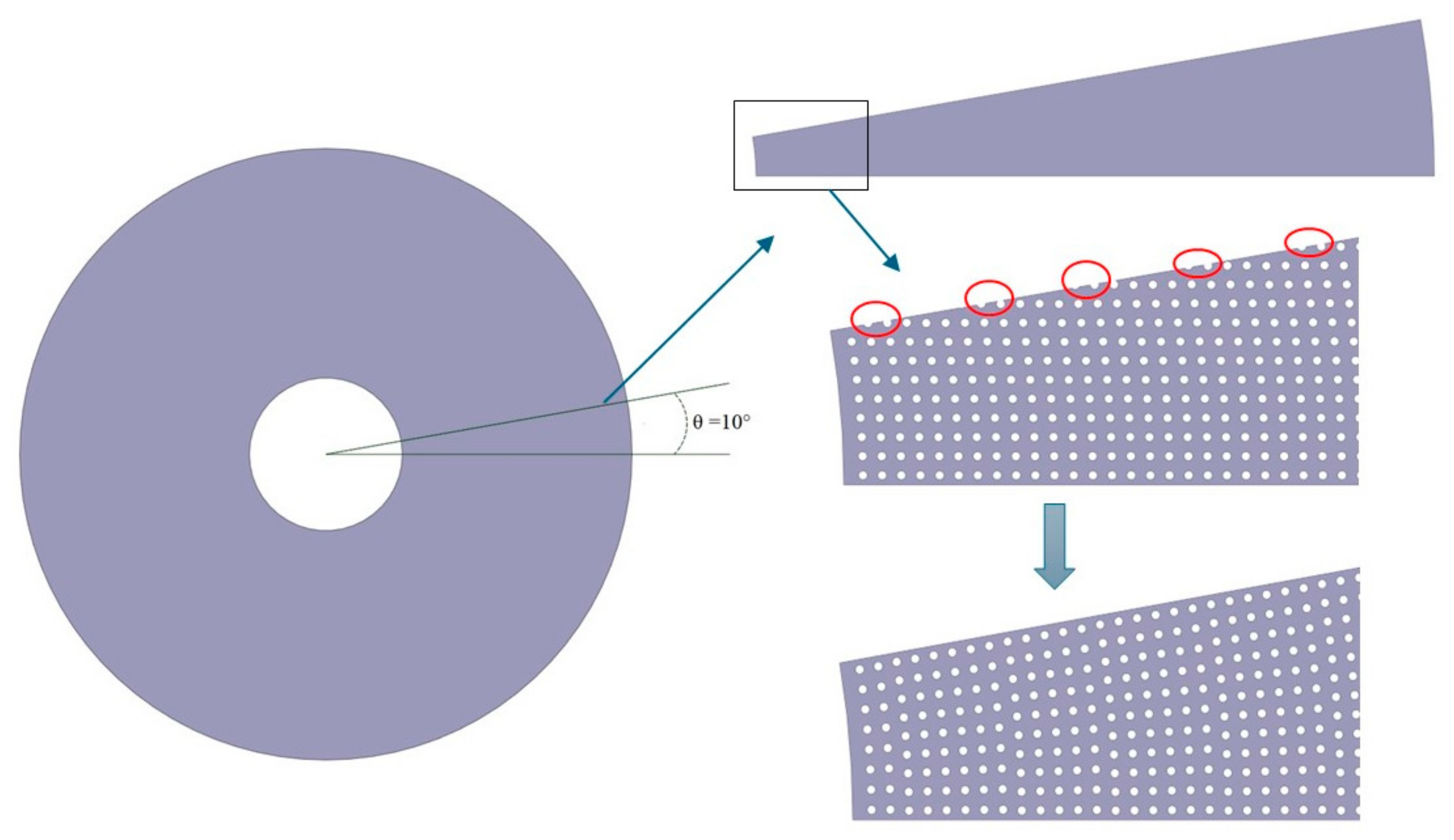


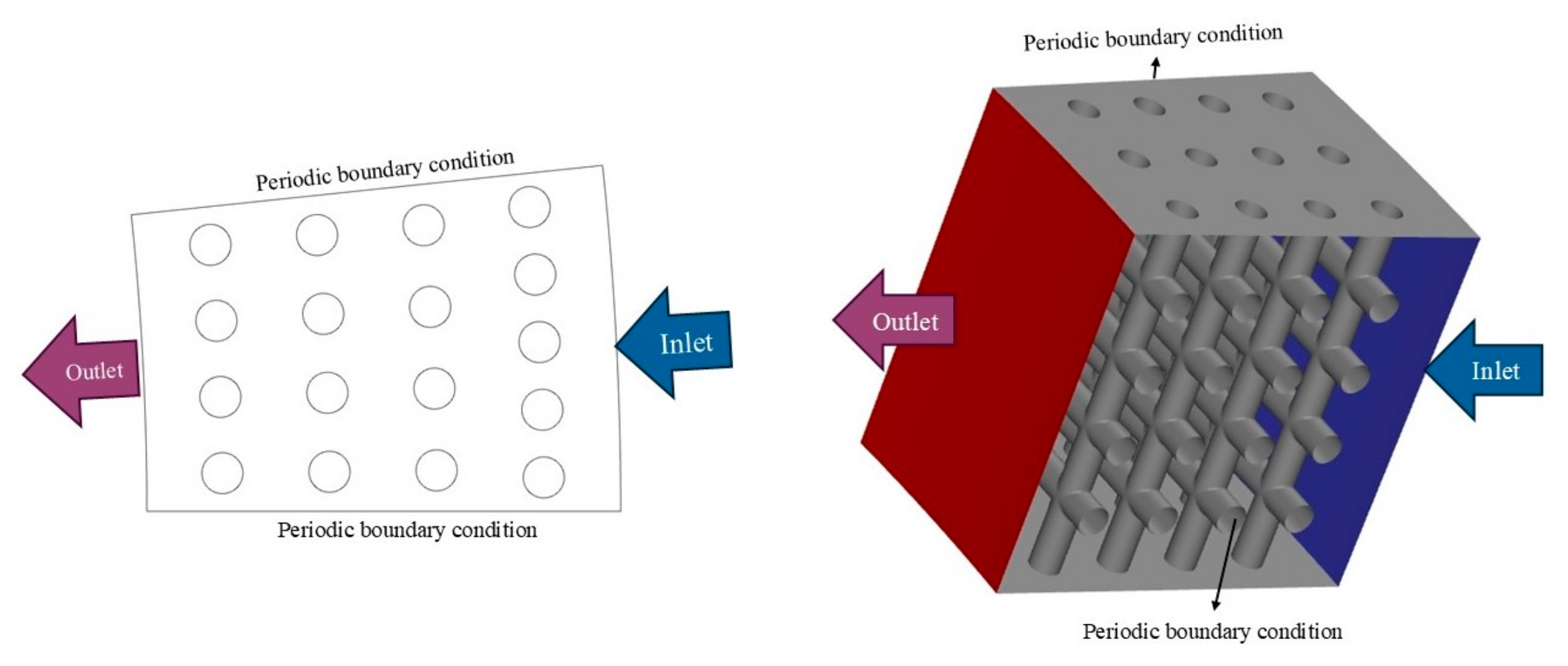
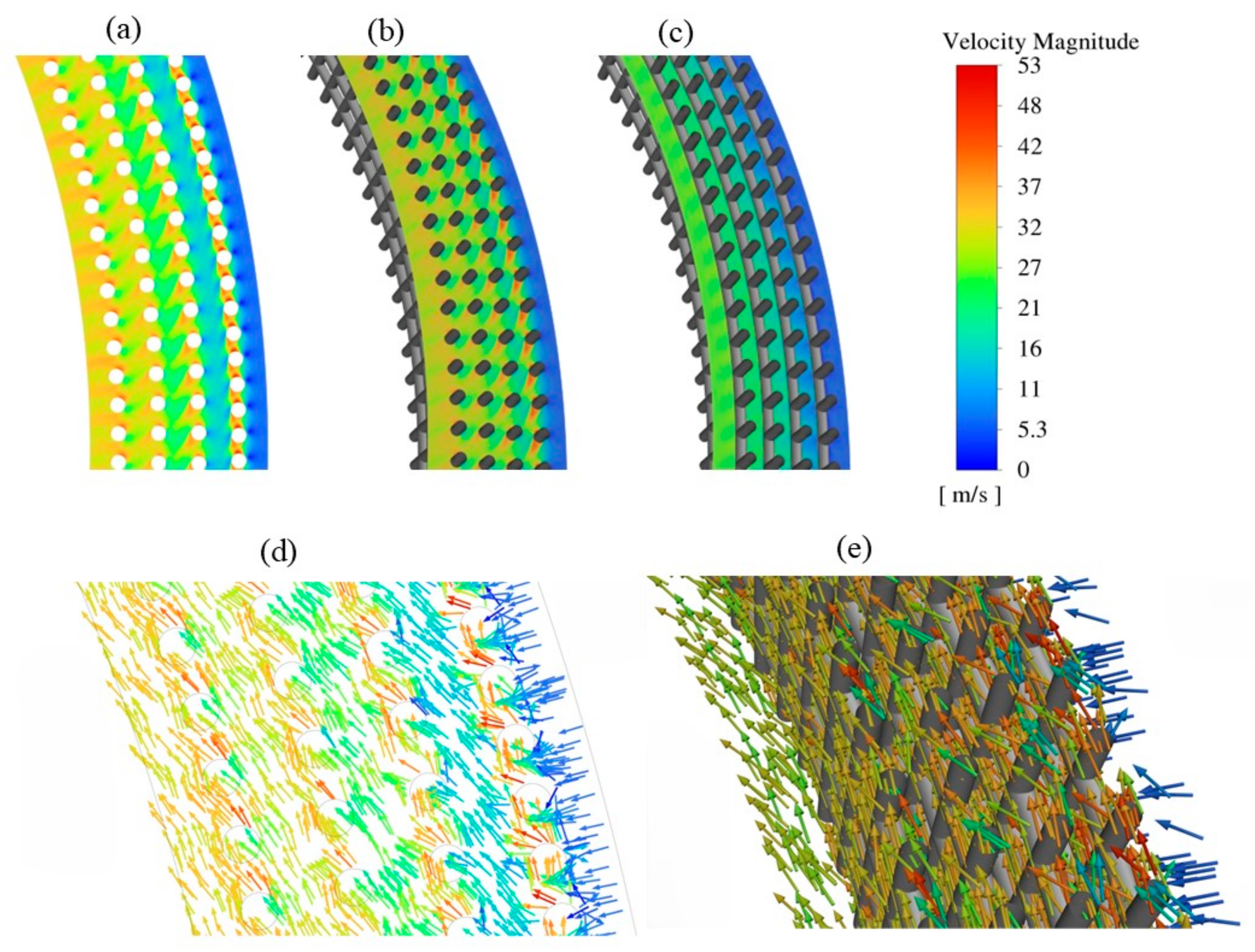

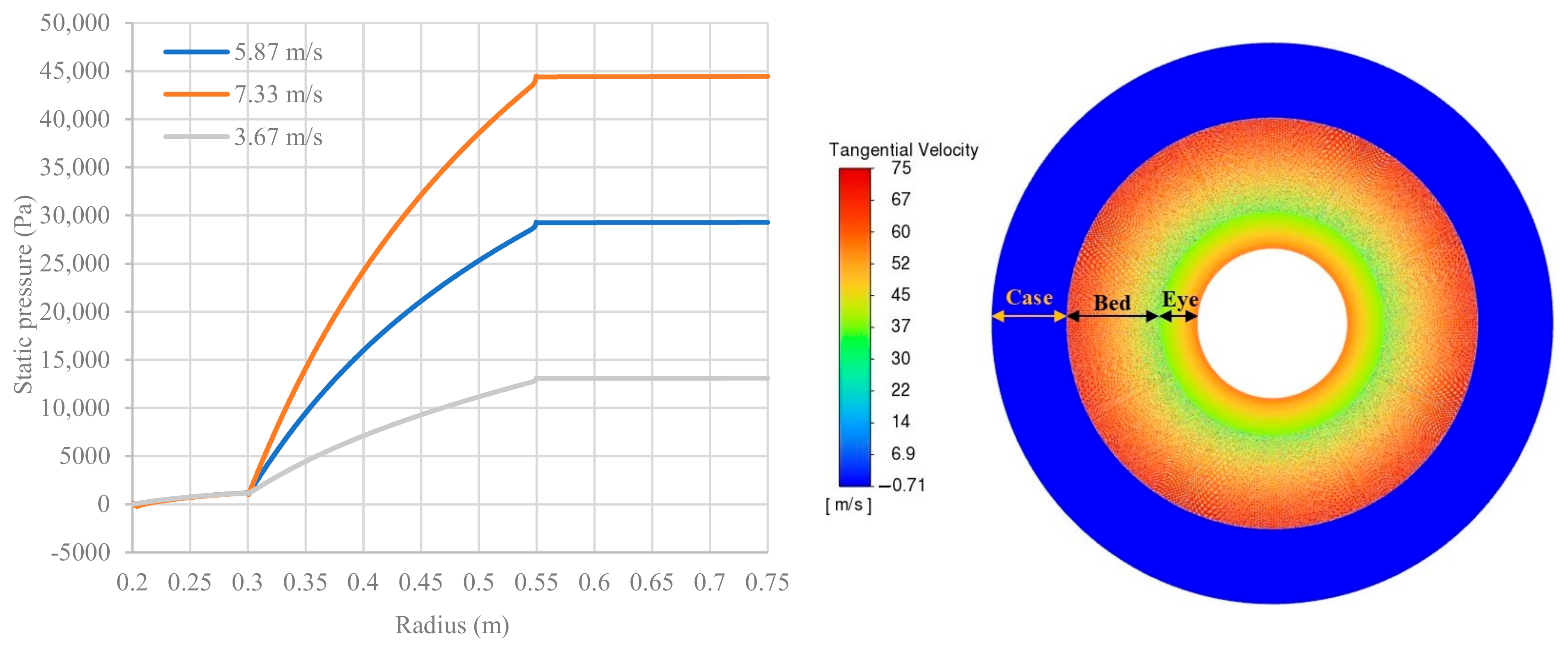



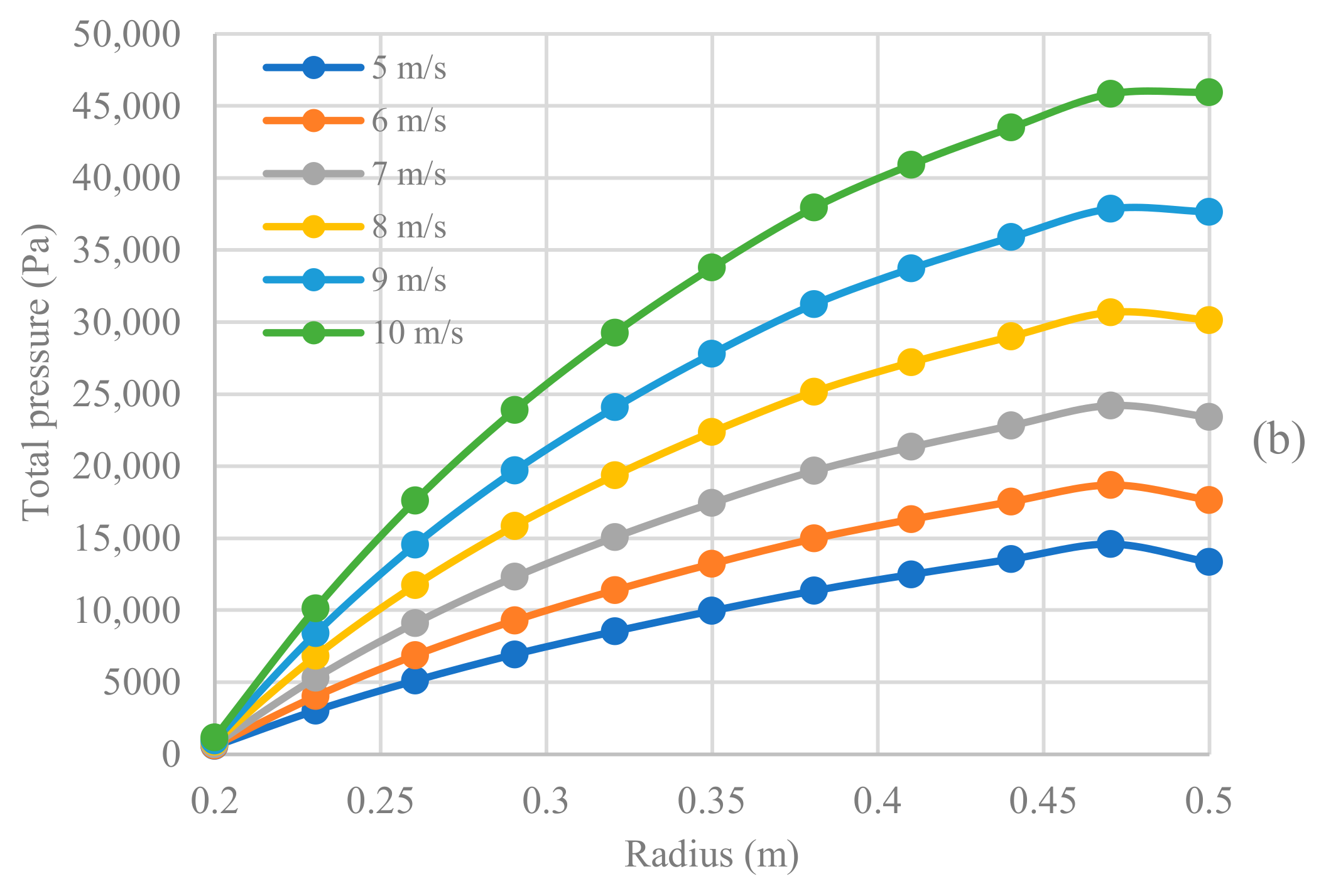
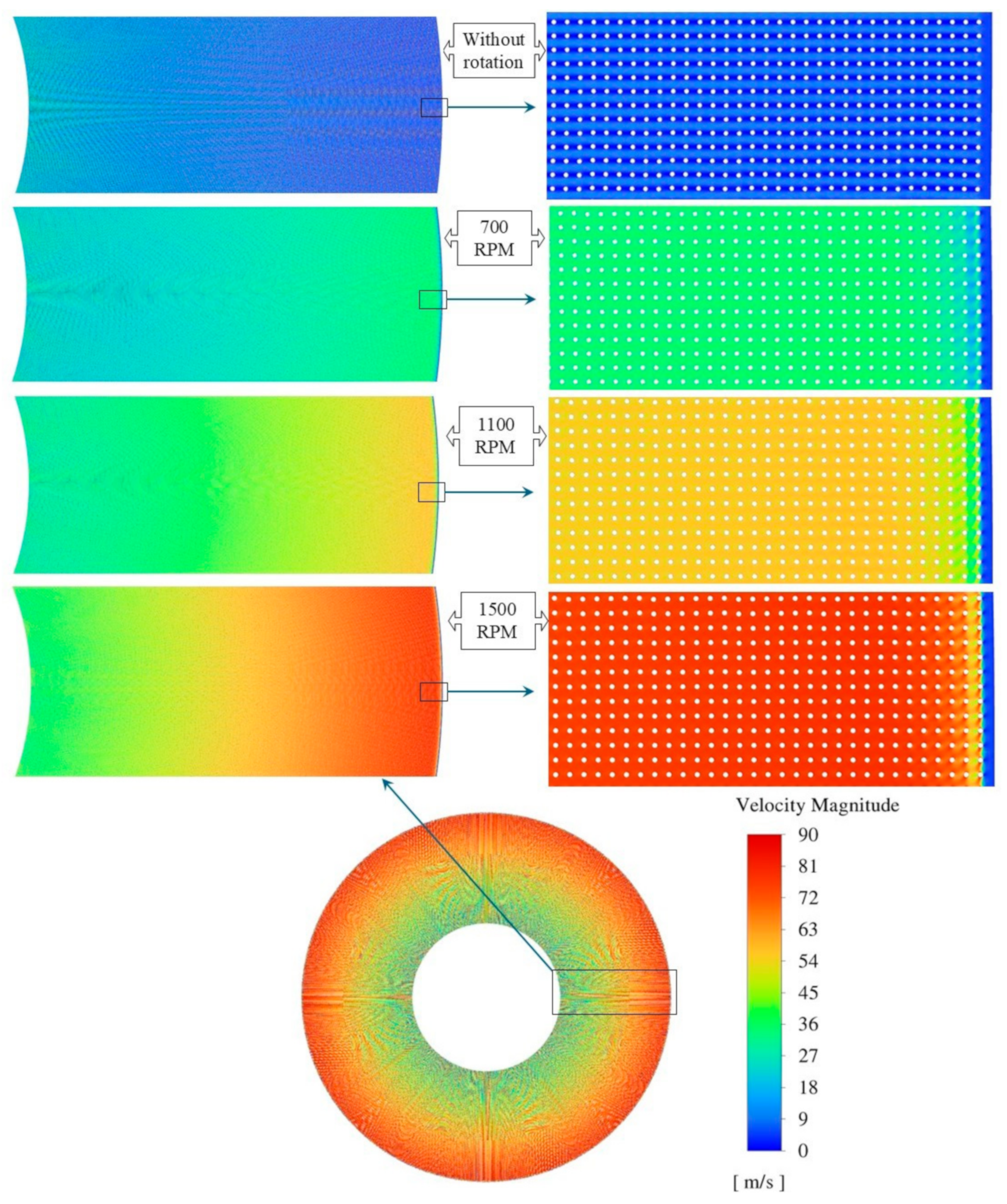

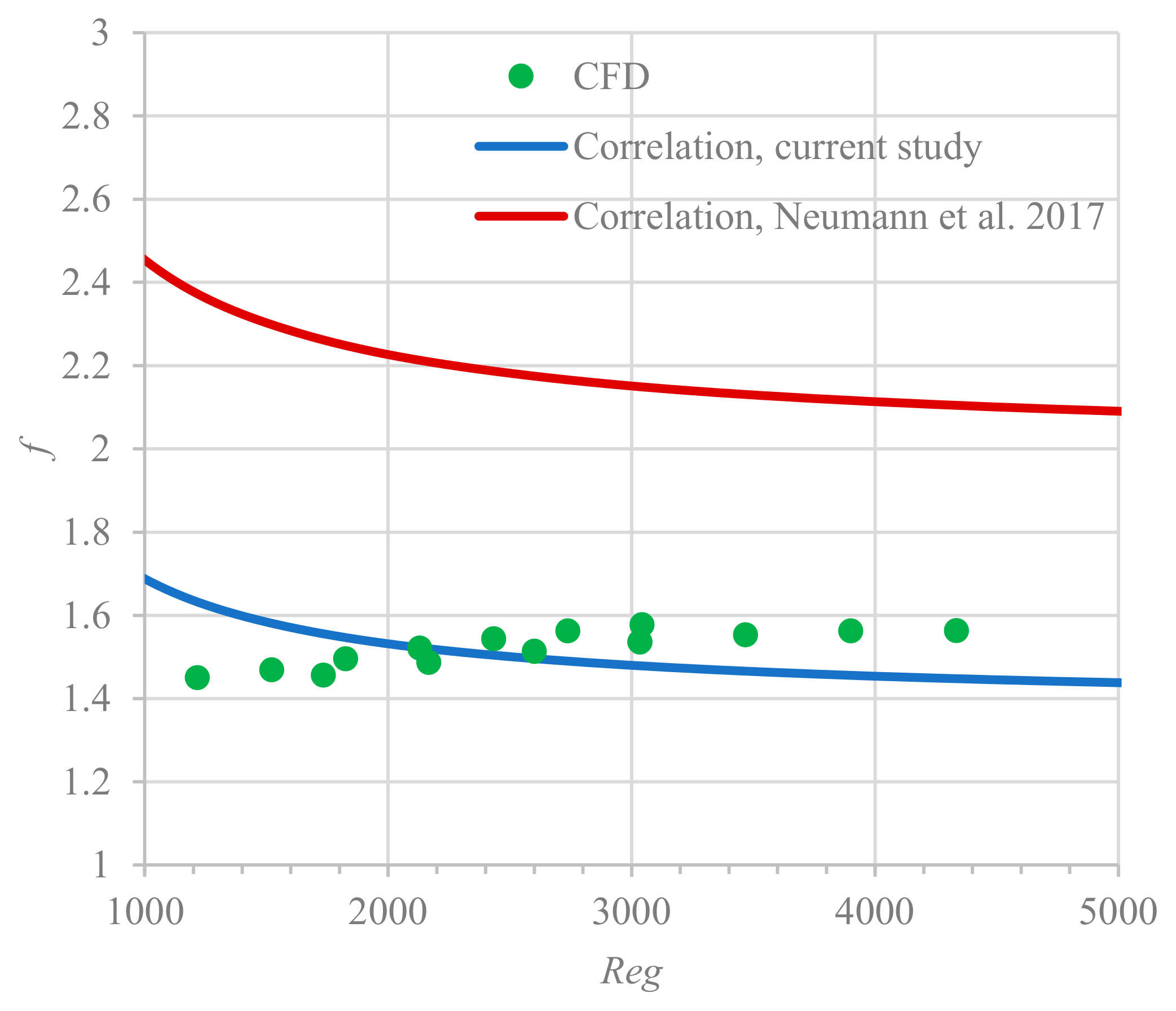


| Case | Di (m) | Do (m) | ε | ap (m2/m3) | Dw (mm) | nw |
|---|---|---|---|---|---|---|
| 1 | 0.4 | 1 | 0.91 | 1447 | 0.2488 | 1,221,342 |
| 2 | 0.6 | 1.1 | 0.85 | 1800 | 0.3333 | 1,147,546 |
| Case 1 | |||||||||||
|---|---|---|---|---|---|---|---|---|---|---|---|
| RPM | 0 | 700 | 800 | 900 | 1000 | 1100 | 1200 | 1300 | 1400 | 1500 | |
| Uinlet | |||||||||||
| 4 | 6388 | 7332 | 7591 | 7880 | 8202 | 8553 | 8935 | 9348 | 9789 | 10,260 | |
| 5 | 10,189 | 11,150 | 11,412 | 11,705 | 12,031 | 12,388 | 12,773 | 13,185 | 13,631 | 14,106 | |
| 6 | 14,938.1 | 15,916 | 16,182 | 16,477 | 16,789 | 17,161 | 17,549 | 17,968 | 18,416 | 18,888 | |
| 7 | 20,635.4 | 21,620 | 21,890 | 22,186 | 22,514 | 22,871 | 23,261 | 23,679 | 24,129 | 24,605 | |
| 8 | 27,253.9 | 28,249 | 28,517 | 28,813 | 29,143 | 29,503 | 29,892 | 30,306 | 30,758 | 31,233 | |
| 9 | 34,705 | 35,700 | 35,966 | 36,268 | 36,601 | 36,953 | 37,342 | 37,762 | 38,215 | 38,687 | |
| 10 | 42,868.1 | 43,866 | 44,133 | 44,443 | 44,754 | 45,120 | 45,514 | 45,931 | 46,379 | 46,866 | |
| Case 2 | |||||||||||
| 4 | 6171.2 | 7019 | 7264 | 7541 | 7847 | 8184 | 8550 | 8943 | 9362 | 9807 | |
| 5 | 9766.16 | 10,778 | 10,949 | 11,227 | 11,536 | 11,871 | 12,234 | 12,623 | 13,040 | 13,480 | |
| 6 | 14,317.67 | 15,273 | 15,521 | 15,798 | 16,102 | 16,436 | 16,796 | 17,182 | 17,594 | 18,032 | |
| 7 | 19,820.8 | 20,792 | 21,042 | 21,322 | 21,623 | 21,952 | 22,309 | 22,690 | 23,100 | 23,535 | |
| 8 | 26,272.76 | 27,259 | 27,507 | 27,785 | 28,086 | 28,412 | 28,766 | 29,147 | 29,556 | 29,991 | |
| 9 | 33,658.06 | 34,652 | 34,904 | 35,181 | 35,480 | 35,806 | 36,161 | 36,545 | 36,948 | 37,385 | |
| 10 | 41,941.1 | 42,950 | 43,204 | 43,481 | 43,778 | 44,100 | 44,453 | 44,836 | 45,245 | 45,684 | |
Disclaimer/Publisher’s Note: The statements, opinions and data contained in all publications are solely those of the individual author(s) and contributor(s) and not of MDPI and/or the editor(s). MDPI and/or the editor(s) disclaim responsibility for any injury to people or property resulting from any ideas, methods, instructions or products referred to in the content. |
© 2025 by the authors. Licensee MDPI, Basel, Switzerland. This article is an open access article distributed under the terms and conditions of the Creative Commons Attribution (CC BY) license (https://creativecommons.org/licenses/by/4.0/).
Share and Cite
Hosseini, S.; Di Felice, R. CFD Simulation of High Gas Flow Rate in Large-Scale Rotating Packed Beds. ChemEngineering 2025, 9, 126. https://doi.org/10.3390/chemengineering9060126
Hosseini S, Di Felice R. CFD Simulation of High Gas Flow Rate in Large-Scale Rotating Packed Beds. ChemEngineering. 2025; 9(6):126. https://doi.org/10.3390/chemengineering9060126
Chicago/Turabian StyleHosseini, Seyedmohsen, and Renzo Di Felice. 2025. "CFD Simulation of High Gas Flow Rate in Large-Scale Rotating Packed Beds" ChemEngineering 9, no. 6: 126. https://doi.org/10.3390/chemengineering9060126
APA StyleHosseini, S., & Di Felice, R. (2025). CFD Simulation of High Gas Flow Rate in Large-Scale Rotating Packed Beds. ChemEngineering, 9(6), 126. https://doi.org/10.3390/chemengineering9060126






